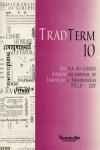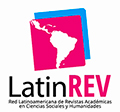Using small corpora to tap and map the process-product interface in translation
DOI:
https://doi.org/10.11606/issn.2317-9511.tradterm.2004.47162Keywords:
Translation process, cognitive rhythm, metacognition, small corpora, process-product interface.Abstract
Building on the notion of small corpora (Ghadessy et al., 2001) and on the need to cross-analyze process-driven and product-driven data (Hansen, 2002) to better elucidate issues of problem solving and decision making in translation (Alves & Gonçalves, 2003), this article proposes the integration of small corpora within the methodological structure of CORPRAT (Corpus on Process for the Analysis of Translations). By means of a case study, it applies Jakobsen’s (2002) findings to the analyses of translators’ cognitive rhythms (Schilperoord, 1996) in order to investigate the cognitive-discursive profile of novice translators in an attempt to map the process-product interface in translation (Alves, 2003).Downloads
Download data is not yet available.
Downloads
Published
2004-12-18
Issue
Section
Translation and Corpora
License
Autores que publicam nesta revista concordam com os seguintes termos:
- Autores mantém os direitos autorais e concedem à revista o direito de primeira publicação, com o trabalho simultaneamente licenciado sob a Licença Creative Commons Attribution BY-NC-SA que permite o compartilhamento do trabalho com reconhecimento da autoria e publicação inicial nesta revista.
- Autores têm autorização para assumir contratos adicionais separadamente, para distribuição não-exclusiva da versão do trabalho publicada nesta revista (ex.: publicar em repositório institucional ou como capítulo de livro), com reconhecimento de autoria e publicação inicial nesta revista.
- Autores têm permissão e são estimulados a publicar e distribuir seu trabalho online (ex.: em repositórios institucionais ou na sua página pessoal) a qualquer ponto antes ou durante o processo editorial, já que isso pode gerar alterações produtivas, bem como aumentar o impacto e a citação do trabalho publicado (Veja O Efeito do Acesso Livre).
How to Cite
Alves, F., & Magalhães, C. (2004). Using small corpora to tap and map the process-product interface in translation. TradTerm, 10, 179-211. https://doi.org/10.11606/issn.2317-9511.tradterm.2004.47162








